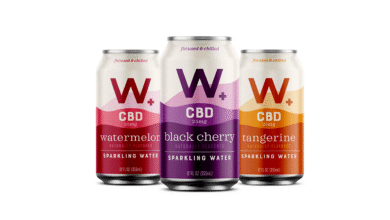How CBD Oil Helps with Pain Relief: Uses, Effects and Benefits
Discover how CBD oil helps with pain relief through scientific research. Learn about benefits, uses, effects, and safety for chronic pain management.

CBD oil for pain relief has gained significant attention as people search for alternatives to traditional pain medications. With chronic pain affecting between 50 and 116 million American adults, the quest for effective, safer pain management solutions has led many to explore cannabidiol (CBD) as a potential answer. Unlike its psychoactive counterpart THC, CBD oil offers potential therapeutic benefits without the “high” associated with cannabis, making it an attractive option for those seeking pain relief.
The growing interest in CBD pain management stems from mounting research suggesting that CBD may help reduce inflammation, interact with pain receptors, and offer relief for various chronic conditions. From arthritis to neuropathic pain, studies indicate that CBD oil benefits extend beyond simple pain reduction to include improved sleep quality and overall well-being. However, the science is still evolving, and understanding both the potential and limitations of CBD for chronic pain is crucial for making informed decisions about this increasingly popular natural remedy.
Understanding CBD and How It Works for Pain Relief
What Is CBD Oil?
Cannabidiol (CBD) is one of over 100 naturally occurring compounds called cannabinoids found in the Cannabis sativa plant. Unlike tetrahydrocannabinol (THC), CBD doesn’t produce psychoactive effects or cause intoxication. Hemp-derived CBD products containing less than 0.3% THC are federally legal in the United States under the 2018 Farm Bill.
CBD oil is extracted from hemp plants and often mixed with carrier oils like coconut or hemp seed oil. The quality and concentration of CBD oil products can vary significantly, making it essential to choose reputable manufacturers that provide third-party testing results.
The Endocannabinoid System and Pain
The human body contains an endocannabinoid system (ECS), a complex cell-signaling network that plays a crucial role in regulating various bodily functions, including pain perception. The ECS consists of:
- Endocannabinoids (naturally produced by the body)
- Cannabinoid receptors (CB1 and CB2)
- Enzymes that break down endocannabinoids
CBD pain relief mechanisms involve interaction with this system, though not in the same direct way as THC. Instead, CBD for pain management works through multiple pathways:
- Modulating receptor activity without directly binding to CB1 or CB2 receptors
- Reducing inflammation through various anti-inflammatory pathways
- Interacting with pain-sensing systems including TRPV-1 receptors
- Influencing neurotransmitter activity related to pain perception
Scientific Evidence for CBD Oil Pain Relief
Recent Research Findings
A 2024 systematic review published in Pain Management Nursing analyzed multiple studies on CBD effectiveness for chronic pain. The review found that the majority of studies indicated pain reduction ranging from 42% to 66% with CBD alone or in combination with minimal THC content. However, the researchers noted that more robust clinical trials are needed to establish definitive recommendations.
According to research published in the National Center for Biotechnology Information, CBD’s anti-inflammatory and analgesic properties appear to be mediated through activation of TRPV-1 receptors, 5HT-1A receptors, and allosteric modulation of CB1 receptors. This multi-target approach may explain why CBD oil for pain shows promise across various pain conditions.
Types of Pain That May Benefit from CBD
Chronic pain conditions that have shown positive responses to CBD treatment include:
Arthritis and Joint Pain
CBD for arthritis pain has shown particular promise in both animal and human studies. A 2016 study in the European Journal of Pain found that topical CBD application significantly reduced inflammation and pain-related behaviors in arthritic rats without additional side effects. The Arthritis Foundation notes that while anecdotal evidence is mixed, some people report noticeable pain relief and sleep improvement with CBD use.
Neuropathic Pain
Neuropathic pain, often described as burning, shooting, or tingling sensations, can be particularly challenging to treat. Research suggests that CBD oil benefits may extend to this type of pain through its interaction with the nervous system and anti-inflammatory properties.
Fibromyalgia
Studies have shown that CBD treatment decreased pain by more than 30% in significantly more fibromyalgia patients compared to placebo groups, indicating potential benefits for this complex chronic pain condition.
Cancer-Related Pain
CBD for pain management in cancer patients has shown promise, particularly when traditional pain medications prove insufficient. Some research indicates that CBD oil may help with both pain and other cancer-related symptoms like nausea and sleep disturbances.
Benefits and Effects of CBD Oil for Pain
Primary Benefits
CBD oil pain relief offers several potential advantages over traditional pain medications:
- Non-psychoactive effects – No intoxication or impairment
- Lower addiction potential – Reduced risk compared to opioid medications
- Anti-inflammatory properties – May address root causes of pain
- Improved sleep quality – Many users report better rest
- Reduced anxiety – May help with pain-related stress and worry
How CBD Oil Affects Different Body Systems
CBD’s effects on pain work through multiple biological pathways:
Nervous System:
- Modulates pain signal transmission
- Influences neurotransmitter activity
- Supports endocannabinoid system function
Immune System:
- Reduces inflammatory responses
- Modulates immune cell activity
- Decreases production of pro-inflammatory compounds
Cardiovascular System:
- May help stabilize blood pressure during stress
- Supports overall cardiovascular health
Duration and Onset of Effects
The timeline for CBD oil effectiveness varies depending on the administration method:
- Sublingual tinctures: 15-45 minutes for onset, lasting 4-6 hours
- Topical applications: 15-60 minutes for localized relief
- Oral capsules/edibles: 30-120 minutes for onset, lasting 6-8 hours
- Vaporized CBD: Immediate onset, lasting 2-4 hours
CBD Oil Uses and Administration Methods
Different Forms of CBD Products
CBD for chronic pain comes in various formulations, each with distinct advantages:
CBD Oil Tinctures
CBD oil tinctures offer precise dosing control and relatively quick onset when taken sublingually (under the tongue). This method allows CBD to enter the bloodstream directly, bypassing digestive processing.
Topical CBD Products
Topical CBD applications include creams, lotions, balms, and patches applied directly to painful areas. These products provide localized pain relief without entering the bloodstream significantly, making them ideal for joint and muscle pain.
CBD Capsules and Edibles
These provide consistent dosing but have slower onset times due to digestive processing. CBD capsules are convenient for those who prefer standardized doses without taste considerations.
CBD Vaporizers
While offering immediate effects, vaporizing CBD oil isn’t recommended by most medical professionals due to potential respiratory concerns.
Dosage Guidelines for Pain Relief
CBD dosage for pain varies significantly between individuals. Medical experts consulted by the Arthritis Foundation recommend:
Starting Protocol:
- Begin with 5-10 mg of CBD oil twice daily
- Wait 3-4 days to assess effects
- Increase by 5-10 mg if relief is inadequate
- Continue gradual increases over several weeks
Maintenance Dosing:
- Most people find relief with 15-50 mg daily
- Doses above 100 mg daily become expensive and may not provide additional benefits
- Chronic pain management may require consistent daily use
Important Considerations:
- Start with lower doses and increase gradually
- Consult healthcare providers before beginning CBD treatment
- Consider drug interactions, especially with medications carrying “grapefruit warnings”
Safety Profile and Side Effects
Common Side Effects
CBD safety profile is generally considered favorable by the World Health Organization. Common side effects of CBD include:
- Mild sedation or drowsiness
- Dry mouth or throat
- Changes in appetite
- Diarrhea (more common with higher doses)
- Fatigue
- Dizziness
- Nausea
Drug Interactions and Precautions
CBD oil can interact with certain medications by competing for liver enzymes responsible for drug metabolism. This can potentially increase blood levels of other medications, similar to grapefruit interactions.
Important Precautions:
- Inform healthcare providers about CBD use
- Avoid CBD products if taking medications with grapefruit warnings
- Monitor for increased medication effects when starting CBD treatment
- Pregnant and breastfeeding women should avoid CBD products
Quality and Purity Concerns
The CBD market remains largely unregulated, leading to quality concerns:
Common Issues:
- Mislabeled potency (significantly more or less CBD than advertised)
- Presence of undeclared THC
- Contamination with pesticides, heavy metals, or solvents
- Absence of beneficial compounds claimed on labels
Safety Recommendations:
- Choose products with third-party laboratory testing
- Verify CBD content and purity through certificates of analysis
- Research manufacturers’ reputations and testing protocols
- Start with reputable brands that provide transparent testing information
CBD vs. Traditional Pain Medications
Comparing CBD to Opioids
The opioid epidemic has intensified interest in pain relief alternatives like CBD oil. Research indicates that CBD may help reduce opioid dependence while providing effective pain management.
Advantages of CBD over Opioids:
- Lower addiction potential
- Fewer severe side effects
- No respiratory depression risk
- Less tolerance development
- Reduced withdrawal symptoms
A prospective cohort study found that patients using CBD-rich hemp extract were able to reduce or eliminate opioid use while experiencing significant improvements in pain and sleep quality. Over half of participants reduced their opioid intake over eight weeks of CBD treatment.
CBD vs. NSAIDs and Other Pain Medications
Non-steroidal anti-inflammatory drugs (NSAIDs) carry risks of gastrointestinal bleeding, kidney damage, and cardiovascular complications with long-term use. CBD’s anti-inflammatory properties may offer similar benefits with a different risk profile:
Potential Advantages:
- Reduced gastrointestinal risk
- Lower cardiovascular concerns
- Additional benefits for sleep and anxiety
- Multiple mechanisms of action
Legal Status and Regulations
Federal and State Laws
Hemp-derived CBD products containing less than 0.3% THC are legal at the federal level under the 2018 Farm Bill. However, the legal landscape remains complex:
Federal Status:
- CBD products from hemp are no longer Schedule I substances
- FDA regulation is minimal for non-prescription products
- Only Epidiolex (pharmaceutical CBD) is FDA-approved for medical use
State Variations:
- Individual states may have different regulations
- Some states require specific licensing for CBD sales
- THC content limits may vary by jurisdiction
- Employment drug testing may detect trace THC amounts
FDA Approval and Medical Use
Currently, CBD alone is not FDA-approved for pain treatment in the United States. However, combination medications containing both THC and CBD (like Nabiximols/Sativex) have been approved in other countries for:
- Central neuropathic pain in multiple sclerosis
- Cancer pain unresponsive to optimized opioid therapy
The lack of FDA approval for CBD pain treatment means healthcare providers cannot officially prescribe CBD oil for pain management, though they may provide guidance for patients choosing to use these products.
Choosing Quality CBD Products
What to Look for in CBD Oil
When selecting CBD oil for pain relief, consider these quality indicators:
Product Testing:
- Third-party laboratory verification
- Certificate of Analysis (COA) availability
- Testing for potency, pesticides, heavy metals, and solvents
- Verification of CBD content and THC levels
Source and Extraction:
- Hemp-derived CBD from reputable farms
- CO2 or ethanol extraction methods
- Organic growing practices when possible
- Full-spectrum, broad-spectrum, or isolate options
Manufacturer Reputation:
- Transparent business practices
- Clear contact information and customer service
- Good manufacturing practice (GMP) certification
- Positive customer reviews and professional recommendations
Understanding Product Labels
CBD product labels should clearly indicate:
- Total CBD content per container and per serving
- Other cannabinoids present (if full or broad spectrum)
- THC content (should be ≤0.3% for legal hemp products)
- Carrier oil ingredients
- Batch numbers for tracking and verification
- Expiration dates
Potential Limitations and Contradictory Research
Research Challenges
While many studies show promise for CBD pain relief, significant limitations exist:
Study Limitations:
- Small sample sizes in many clinical trials
- Short-term follow-up periods
- Variability in CBD dosing and administration methods
- Mixed results across different pain conditions
- Limited high-quality randomized controlled trials
Contradictory Findings
A 2024 study from the University of Bath challenged CBD effectiveness claims, concluding that most consumer CBD products show no evidence of pain reduction. The research found that of 16 randomized controlled trials examining pharmaceutical-grade CBD for pain, 15 showed no positive results compared to placebo.
This contradictory evidence highlights the importance of:
- Realistic expectations about CBD benefits
- Consulting healthcare providers before starting treatment
- Understanding individual variability in treatment response
- Continuing research to establish definitive guidelines
Future of CBD Research and Development
Ongoing Clinical Trials
CBD research continues expanding with studies investigating:
- Optimal dosing protocols for different pain conditions
- Long-term safety of regular CBD use
- Combination therapies with conventional medications
- Personalized medicine approaches based on individual genetics
- New delivery methods for improved effectiveness
Regulatory Development
As research progresses, CBD regulation may evolve to include:
- Standardized quality requirements for consumer products
- Clinical practice guidelines for healthcare providers
- Insurance coverage for proven medical applications
- Improved labeling standards and consumer protections
Conclusion
CBD oil for pain relief represents a promising but still evolving treatment option for chronic pain management. While research suggests potential benefits including anti-inflammatory properties, reduced pain perception, and improved quality of life, the science remains incomplete. Current evidence indicates that CBD may be effective for certain types of chronic pain, particularly when used as part of a comprehensive pain management strategy. However, the lack of standardized dosing guidelines, variable product quality, and mixed research results emphasize the importance of working with healthcare providers when considering CBD treatment. As research continues and regulations develop, CBD oil may become a more established tool in the fight against chronic pain, offering hope for millions seeking alternatives to traditional pain medications while maintaining realistic expectations about its current limitations and potential.









